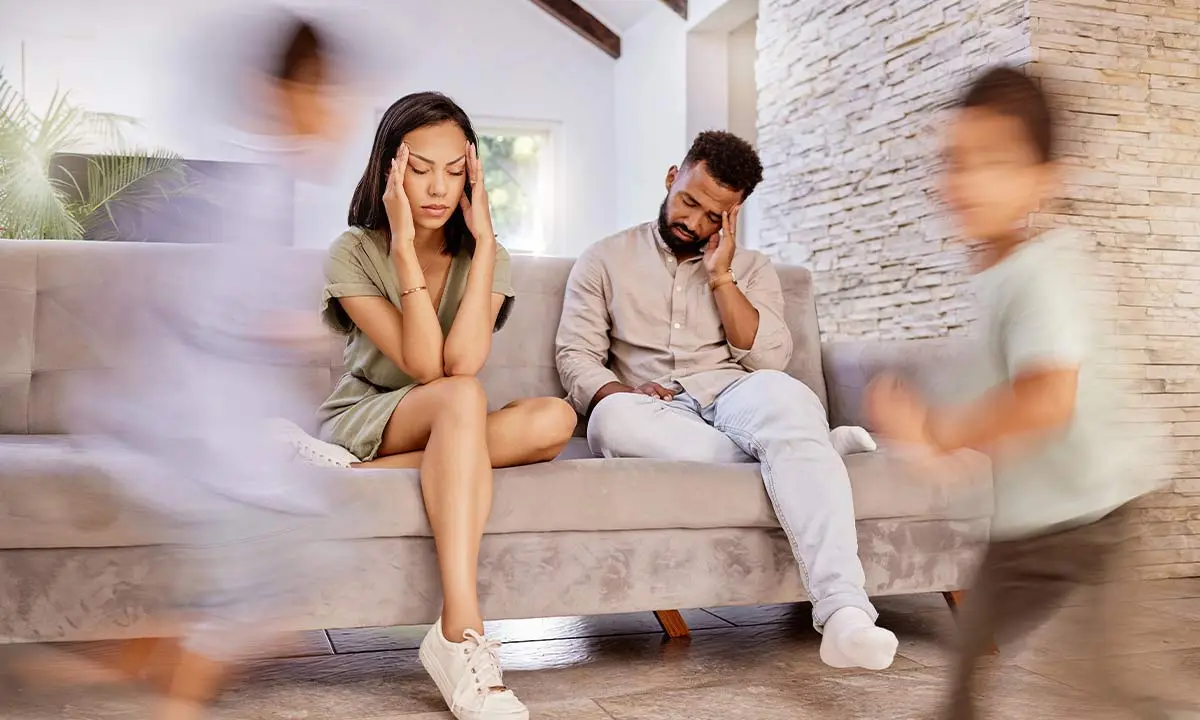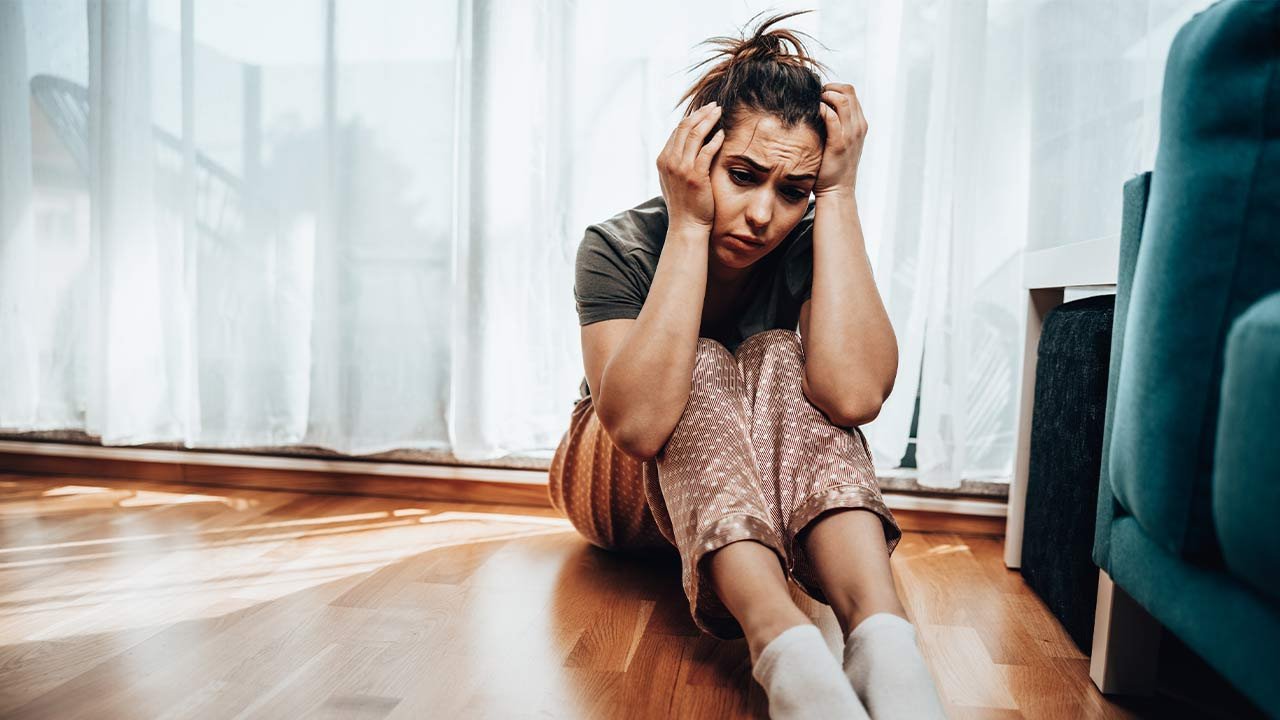
Separation Anxiety Disorder: Causes, Symptoms, and Treatment
The excess fear of losing or getting separated from any person, place, or thing is called separation anxiety disorder and is a mental health condition. Generally, it is associated with children, but there are chances that even adults can experience it in case of separation from loved ones. Excessive worry or fear or difficulty in functioning independently is one of the common symptoms. Let us dive deep into this topic.
What is Separation Anxiety Disorder?
Anxiety from separation is not unusual, both in adults and in children. However, it is mostly found in kids, especially those between 6 months and 3 years. Older kids might struggle with school drop-overs. However, they gradually grow out of it. It is common but if the symptom persists and gets intense with time, the anxiety might be a disorder and would require immediate intervention of the healthcare providers.
The Difference Between Normal Childhood Separation Anxiety and When it Becomes a Disorder
Separation anxiety is a normal part of the developmental cycle for children to get over it with time and love their caregivers. But sometimes if the intensity is high and affects daily life, it becomes a disorder and affects the children.
Separation Anxiety Disorder (SAD)
| Normal Separation Anxiety | Separation Anxiety Disorder (SAD) |
|---|---|
| Typically, between 8 months and 3 years | Can persist beyond early childhood, affecting older children, teens, and even adults |
| Temporary, fades with age | Lasts at least 4 weeks in children, 6 months in adults |
| Mild to moderate distress | Intense, overwhelming fear of separation |
| Child may cry or protest but calms down soon | Extreme distress, panic attacks, or physical symptoms (headaches, nausea) |
| Does not interfere with normal activities | Disrupts school, social life, and family routines |
| Minimal worry, temporary concerns | Persistent, irrational fears about harm to loved ones |
| May be clingy but still engages in activities | Avoids school, social events, or sleeping alone |
| No treatment needed; child outgrows it | May require therapy or intervention if it affects daily life |
Symptoms of Separation Anxiety Disorder
There are symptoms for both adults and kids suffering from SAD (Separation Anxiety Disorder). Understanding these physical or emotional changes as symptoms can help you treat them better. Sometimes, it requires immediate help so keep a check on these early signs of anxiety disorder.
Emotional and Physical Symptoms in Both Children and Adults
Emotional Separation Anxiety Disorder Symptoms:
- Excessive worry about losing a loved one
- Fear of being alone
- Panic attacks or extreme distress when separated
- Nightmares about separation
- Reluctance or refusal to go out (office, school, or other social events)
Physical Separation Anxiety Disorder Symptoms:
- Stomach aches, headaches, or nausea before or during separation.
- Dizziness or difficulty breathing
- Trouble sleeping alone
- Loss of appetite or digestive issues
How to Recognize Early Signs and Symptoms
Frequent and regular clinginess (Eg: Even after a certain age, kids are not willing to go out alone to school or to play without parents)
- Avoiding normal activities like going to school due to fear
- Extreme emotional reactions when facing separation
- Constant reassurance-seeking
- Unexplained physical complaints before separation situations
It is to be noted that the early recognition is important because untreated SAD can lead to social withdrawal, academic struggles, and long-term anxiety issues.
Causes of Separation Anxiety Disorder
Separation anxiety disorder causes are mentioned as it can occur due to several underlying factors like genetic factors, environmental influences, and possible trauma. It is important to understand these symptoms to get through this problem.
Genetic Factors, Environmental Influences, and Possible Trauma
Genetic Factors: If genetic disorder runs in the family and children with parents going through anxiety disorders are more likely to experience SAD.
Environmental Factors: One of the major causes of separation anxiety disorder is the environmental factors, which means the surroundings of the children suffering through this. Sometime overprotective parenting can reinforce fear of separation and increase dependency. Major life changes such as moving to a new home, changing schools can also cause such problems.
The Role of Attachment Theory in Developing Separation Anxiety
The attachment theory suggests that a strong bond with the caregiver is important for the child. The secured development often leads to create a safer space for them, which can eventually reduce the chances of fear of separation or anxiety disorder. With secure attachment, the child feels that the caregiver will be returning soon and so there would be lesser anxiousness during separation as compared to insecure attachments.
Diagnosis and Testing for Separation Anxiety Disorder (SAD)
Common Methods of Diagnosing the Disorder
As SAD or Separation Anxiety Disorder is psychological turbulence, the diagnosis is dependent upon behavioural assessment. Healthcare provider often uses certain criteria through counselling and then conclude the separation anxiety disorder diagnosis. Common ways to diagnose include:
- Counselling and interview session: Understanding the fears and emotional responses of the child through discussion and then concluding.
- Behavioral Questionnaires: Behavioral Questionnaires asked to caregivers to fill up a form to understand the psychology based on Separation Anxiety Scale for Children (SASC).
- DSM-5 Criteria: Doctors use the Diagnostic and Statistical Manual of Mental Disorders (DSM-5) to check if symptoms meet the clinical definition of SAD
Importance of Seeing a Healthcare Professional and What to Expect During the Process.
Why to visit a healthcare provider?
- Early diagnosis helps in easy and immediate prevention
- Proper assessment ensures the right treatment approach
- Guidance for parents on how to support their child
What to Expect During the Process
- The doctors would gather the detailed information and causes for diagnosis separation anxiety disorder.
- Doctors would discuss the parent’s behavioral pattern at home and especially with the child
- If necessary, standardized tests may be used to assess anxiety levels.
- Based on the assessment, the treatment will be provided.
Treatment Options for Separation Anxiety Disorder
Based on the assessment of the root cause and the behavioural pattern, healthcare providers offer separation anxiety disorder treatment. There are different methods to do so and we have listed the major treatment options for SAD here.
Behavioral Therapy: Cognitive Behavioral Therapy (CBT)
Considered to be the most common treatment options for anxiety disorder, both in kids and adults, CBT is changing the negativing thought pattern and developing a coping mechanism.
In this, the healthcare provider uses the expose therapy technique in which the patient is exposed to separation situations under medical supervision to get over fear with time. In addition, the identification of irrational fears of separation is also noted and treated. Moreover, the social skill trainings and relaxation techniques are also offered.
Medication and its Role in Treatment (SSRIs and other anti-anxiety medications).
Medication (SSRIs & Anti-Anxiety Drugs) – Used for severe cases to regulate mood and anxiety, often combined with therapy. It helps regulate mood and anxiety levels. However, the medication is mostly provided to the older children with persistent symptoms. Remember that anti-anxiety medicines are only for short-term relief in extreme cases and is not recommended for long term usage.
Parent and Caregiver Strategies for Supporting Children with Separation Anxiety
For a complete treatment for separation anxiety disorder, parents or caregivers should also take a not of a few things.
- Encourage Gradual Separation
- Remain Calm and Confident
- Develop a Goodbye Routine
- Validate Feelings, But Set Limit
- Encourage Socialization
- Use Positive Reinforcement
Coping Strategies for Individuals and Families
Even if the treatment is over or if the anxiety is not severe, families and caregivers should follow a few important separation anxiety disorder managing tips. It will help coping up with separations easily.
How Can Families Cope with a Child’s Separation Anxiety Disorder?
- Practice gradual separation
- Stay calm and reassuring during separation
- Keep goodbyes short, predictable, and positive
- Support activities that allow the child to be independent
- Praise efforts to manage anxiety
- Maintain a Consistent Routine
Self-help Tips for Adults Managing their Own Anxiety
- Replace worries with positive thoughts
- Practice relaxation techniques like meditation
- Regular exercise helps reduce stress
- Maintain a healthy routine
- Set small goals to build confidence
- Talk to friends, family, or support groups to stay connected
The Importance of Creating a Supportive Environment at Home
The best way for separation anxiety disorder management is to create a supportive environment at home. A stable home reduces anxiety and provides emotional security to the child. A supportive home is a safe place for the child where open communication is encouraged. Building trust and talking about anxiety often reduces anxiety triggers. Also, make sure to maintain a predictable routine.
When to Seek Professional Help
If separation anxiety interferes with daily life, school, work, or relationships, it is the right time for professional help at best anxiety treatment centre. Sometimes, symptoms are physical and not just behavioural, and if not treated early can impact the overall growth of the child. Recognizing when the anxiety becomes too overwhelming to manage alone is the best way to deal with the problem. There are several support groups and therapy options available for immediate help. But, for permanent resolution, we recommend visiting a professional and opting for separation anxiety disorder therapy.


